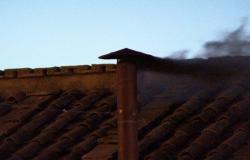
The raccoon was introduced in France several times, but the first mention in kind dates from 1934 in the Haut-Rhin. However, the population that has really been established in mainland France, especially in New Aquitaine comes mainly from animals released or escaped in the 1960s, in particular from an American military base in Aisne, where American soldiers would have introduced the raccot as mascot. This historic household is at the origin of the most important population of this invasive exotic species which reproduces at full speed in France and begins to manecer biodiversity.
Read also:
A kind of North America that invites itself to Aquitaine: the Raton Later (Procyon Lotor)
There are now in a dozen French departments, far from the introductory historical nuclei, located in Aisne and in the Grand Est (Lorraine, Alsace, Vosges). The Gironde is a separate case: the first recent reports date back to 2007, but since then, the presence of the species has been intensifying.
We are no longer talking about one or two lost individuals but of a real wild population established.
Raccoon (Procyon Lotor): Portrait of a masked opportunist
The raccoon, this small masked bandit, measures on average 80 cm long, including tail, with individuals varying between 60 and 105 cm depending on their size. Its weight generally oscillates between 3.9 and 9 kg, but certain specimens in the north of the American continent can reach up to 28 kg. The male is often larger and heavier than the female.
Its coat, mixing gray, brown and sometimes red shades, is decorated with a characteristic black mask around the eyes, bordered with white, which gives it this inimitable look. Its bushy tail, 20 to 28 cm long, bears 5 to 7 brown or black rings, with an always black end. The front legs, with five very mobile fingers, give it a remarkable dexterity, almost human, allowing it to manipulate objects and food with astonishing precision.
A lifestyle adapted to all situations
Nocturnal and excellent climber, the raccoon uses its sharp claws and agile fingers to climb trees and urban structures with ease. He is able to go down the head at the bottom thanks to a rare adaptation from mammals of this size: its rear legs can be oriented backwards.
Opportunistic omnivore, it feeds on a wide variety of foods: small aquatic animals, insects, fruits, berries, eggs, and even human waste. His sense of touch is so developed that he can determine the edibility of an object without seeing it, especially in water, where he often “wash” his food, hence his name.
Reproduction and life cycle
The breeding season extends from February to June, with a peak in March. The male, polygamous, extends its territory to cover several females, but does not participate in the education of the little ones. Gestation lasts about 63 to 65 days, and the female gives birth to 3 or 4 small on average. The newborns, blind at birth, open their eyes between 18 and 24 days, and are weaned around 70 days. At five months old, they begin to follow their mother during her night outings.
A slow, but regular expansion
Between 2008 and 2013, naturalists and traps in the region recorded 51 proven cases in New Aquitaine. This includes 29 catches in approved traps, 13 road collisions and 9 visual observations or indirect indices.
The distribution card leaves little doubt: the south-east of Bordeaux is the main household, but reports appear to the north of Blaye and south of Cudos. In other words, the raccoon is taking its marks in the department, without being limited to a limited territory.
And even if it does not yet look like a flash invasion on the part of this “so cute” animal, he worries the experts.
A general food: the buffet is open
The researchers did not only raise reports. They also analyzed the contents of the stomach of 14 individuals captured in 2013. Result: the raccoon is not the difficult.
He consumes invertebrates, plants, small vertebrates, even human remains if he finds them in garbage. This food plasticity allows it to adapt very quickly to various environments, whether rural, peri -urban or forestry.
In Gironde, the data indicates an increased presence near rivers and wooded areas, which fits well with its North American habits.
The raccoon may be “cute” it is nonetheless a threat to biodiversity in France.
A cute, but not harmless
Yes, the raccoon has a nice boil. Yes, he looks like a cartoon character. But in the field, he can pose real ecological problems.
First, he is a vector of diseases such as leptospirosis or rage (even if the latter is currently absent from France). Then, it can predict eggs and young people from protected species, such as certain local aquatic turtles.
And finally, its simple presence modifies the ecological dynamics, by competing with native species such as the shackle or the badger.
We are therefore far from a simple zoological curiosity: it is a disturbing factor in Aquitaine ecosystems.
Scientific surveillance already in place
To follow the evolution of this population, an ecological watch was launched in 2012, controlled by the association Cistude Nature with the support of the ONCFS (today integrated into OFB) and the tramps of the Gironde.
The objective is twofold: scientifically document the expansion of the raccoon, and offer concrete responses to limit their progression. This involves collecting field data, training of traps, and laboratory analyzes to better understand its diet and health state.
In parallel, naturalist databases such as fauna aquitaine.org make it possible to meet the reports and to involve the general public in surveillance.
Should we alarmed it?
It all depends on the point of view. In terms of biodiversity, the sustainable installation of an opportunistic predator in an already fragile region can actually pose concern. Especially since, unlike other exotic species, the raccoon is not limited by temperature or altitude: it acclimatizes quickly.
But it would be an exaggeration to speak of an imminent ecological disaster. For the moment, the populations remain located. However, without rapid intervention, the risk of expansion to the Landes, Lot-et-Garonne or even the Pyrénées-Atlantiques is very real.
The file therefore remains open, but it will take coordination between scientists, territory managers and citizens to prevent this black mask from becoming a symbol of ecological imbalance.
New Aquitaine threatened by other exotic invaders
| Species | Type | Origin | Main impacts | Special features / actions in progress |
| Lavel Raton (auter Proction) | Mammal | North America | Predation on local fauna, agricultural damage, transmission of diseases | Opportunistic species, difficult to control, expanding in the region |
| Baccharis halimifolia (Faux cotonnier) | Plante | North America | Training of dense bushes, massive production of seeds, competition with the local flora | Life Nature Coop Cortaderia program for management and awareness |
| Cortaderia Selloana (herbe de la pampa) | Plante - | South America | Allergenic feathers, high production of seeds, competition with local species | Regional wrestling project coordinated by CEN Nouvelle-Aquitaine |
| Pittospore tobira (Pittospore de Chine) | Shrub | Far East | Formation of little diverse thickets, dispersion by birds | Invasive species expanding in urban and semi-natural environments |
| Reynoutria Japonica (Renouée from Japan) | Plante | East Asia | Rapid growth, soil impoverishment, deprivation of light and nutrients to local species | Very invasive species, difficult to eradicate |
| Ambrosia artemisifolia (Ambroisie à leaf d’Armoise) | Plante | North America | Highly allergenic pollen, sanitary impact, reduction of agricultural yields | Progressive extension, awareness-raising actions and fight by Fredon Nouvelle-Aquitaine |
| America mink (Neovison Vish) | Mammal | North America | Competition with European mink, threat to local biodiversity | High expansion species, cause of decline in European mink |
| Louisiana crayfish (Procambarus clarkii) | Crustacean | North America | Disruption of aquatic ecosystems, predation on young fish, degradation of the banks | Difficult control, significant impact on aquatic environments |
| Alternanthera philoxeroides | Aquatic plant | South America | Rapid colonization of rivers, competition with local vegetation | Invasive aquatic species, impact on biodiversity and water management |
| Myriophyllum heterophyllum | Aquatic plant | North America | Formation of dense carpets in water bodies, embarrassments navigation and biodiversity | Supervised species to limit its spread |
This table only covers a selection of the most worrying species in New Aquitaine. The region lists more than 650 exotic taxa present in natural and semi-natural environments, whose assessment and risk prioritization are underway.
The issues are multiple: ecological with the threat to local, health (allergenic pollen), and economic (agricultural damage, management costs). The struggle is based on coordination between scientists, managers and citizens, with specific programs for certain species such as pampa grass or ambrosia.
Vigilance remains in order, because these species continue to progress, gradually modifying the natural and urban landscape of New Aquitaine.
Source : https://www.especes-exotiques-envahissantes.fr/wp-content/uploads/2013/12/Ruys-poster-SFEPM-2013_Raton-laveur.pdf







